How Lunar New Year Is Celebrated Around Asia
Discover the different ways Asian countries celebrate Lunar New Year.
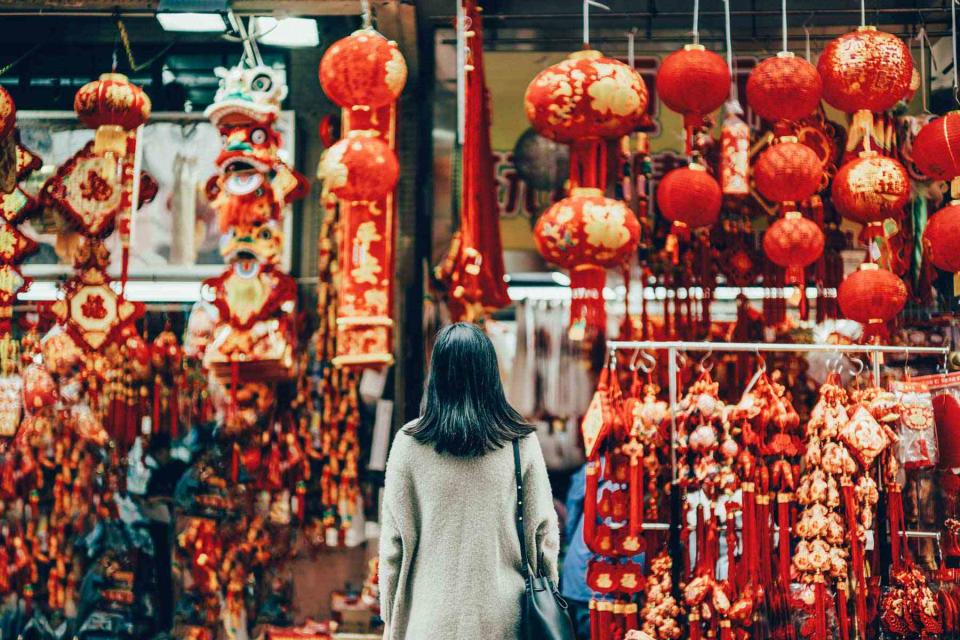
When the Lunar New Year holiday arrives each year, it brings a flood of fond memories for me. My family immigrated from Seoul, South Korea, to Canada when I was 5 years old, and my parents wanted to make sure I didn't forget my Korean roots, or the importance of tradition — especially one as vital as Lunar New Year, which is called Seollal in Korean.
The Seollal holiday was just one way my parents tried to keep our heritage alive. I'm so grateful that they did things like sign me up for Sunday Korean school at church and encourage me to watch K-dramas or listen to K-pop music so I wouldn't forget my language. The stories they told me, the food we ate, and the traditions that were passed down all played an integral part in who I am today as a Canadian-Korean woman.
Contrary to what many people outside Asia may think, Lunar New Year is not an exclusively Chinese holiday. True, it follows the Chinese Lunar calendar (in 2023, it falls on January 22, the Year of the Rabbit), but the holiday is celebrated across Asia, and each country has its own customs and traditions. Lunar New Year is most often celebrated by eating specific dishes, usually with the entire family, and observing superstitions meant to bring good luck for the coming year.
Here's how Lunar New Year is celebrated in some Asian countries.
Lunar New Year in Korea
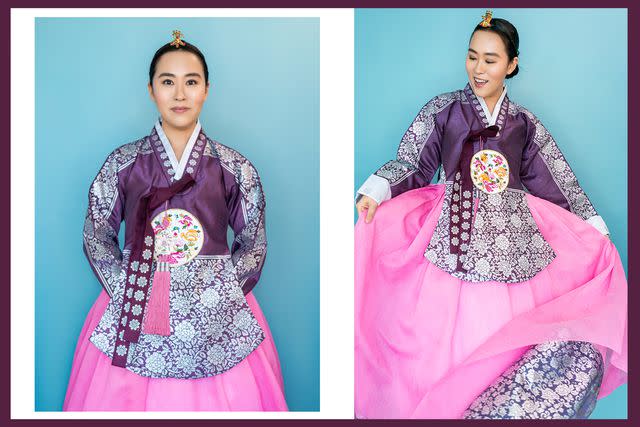
In Korea, Lunar New Year is one of the most important traditional holidays, offering a chance to pay respect to your ancestors and elders. It's a three-day celebration, and everyone ages one year at the start of the Lunar New Year celebrations. (In Korean culture, people's international age increases on their birthday like elsewhere, while their Korean age — which starts at 1 year on the day they're born — changes at New Year.)
We dress in traditional costumes (known as hanbok), and children show their respect to elders with deep bows (known as seh bae). As part of the celebration, children also receive money and words of wisdom for the new year. One photo I'll always cherish is of myself when I was about four years old, wearing a traditional, bright yellow hanbok and bowing to my grandparents for seh bae don. (New Year's money).
After seh bae, we eat dishes like mandu (Korean dumplings) and dduk-guk (thinly sliced rice cake soup). Other holiday foods include mandu-guk (dumpling soup), galbijjim (braised beef short ribs), japchae (glass noodles), and ddeok (rice cakes).
There are also traditional games people play during the holiday. Yut Nori, a board game played with wooden sticks, is a fun way to celebrate, and yeonnalligi (kite-flying) is done for good luck.
Lunar New Year in China
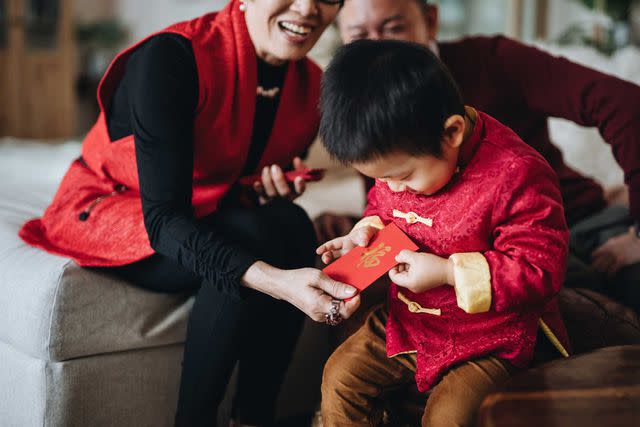
In China, celebrations focus on New Year's Eve, with families coming together to mark the occasion. It's custom to wear new clothes to ring in the new year, usually in lucky colors of red and gold.
In northern China, traditional food eaten during Lunar New Year is made using flour, like baos, pancakes, noodles, and dumplings. Families often make these dishes from scratch, and kids typically search for a lucky coin inside dumplings. The dumplings are usually served with fish, as it symbolizes abundance for the year ahead. Throughout China, family members give each other red envelopes with money as well.
Several superstitions are also widely believed throughout the country. These include not buying new shoes during Chinese New Year and cleaning your house before the holiday, so that you're not washing away good luck at the start of the year. For that same reason, people also don't cut or wash their hair around Lunar New Year.
Lunar New Year in Vietnam
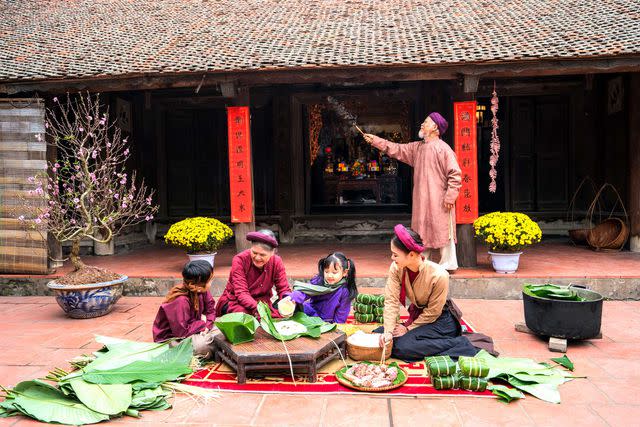
In Vietnam, Lunar New Year is also known as Tết, and it's celebrated with family. Traditional Vietnamese sticky rice cake snacks like bánh tét (a log-like, cylinder snack) and bánh chưng (a square cake), play a vital role in the celebrations. Bánh chưng is preferred in northern Vietnam, where it can be fried or steamed. Other dishes include củ kiệu (pickled scallion), tom kho (dried shrimp) and mut tet (candied fruits).
Just like other countries, Vietnam has its own traditional costume — the áo dài — a silk tunic with slits on either side that's worn over pants by both men and women for the New Year. Children receive red envelopes with money from their older relatives, too.
Most families go to the temple together to pray for good luck, health, and fortune. Some superstitions include paying off all your debts and cleaning your house before the new year, as well as not throwing anything away on New Year's Day, as it's considered to be getting rid of good luck.
Lunar New Year in Singapore
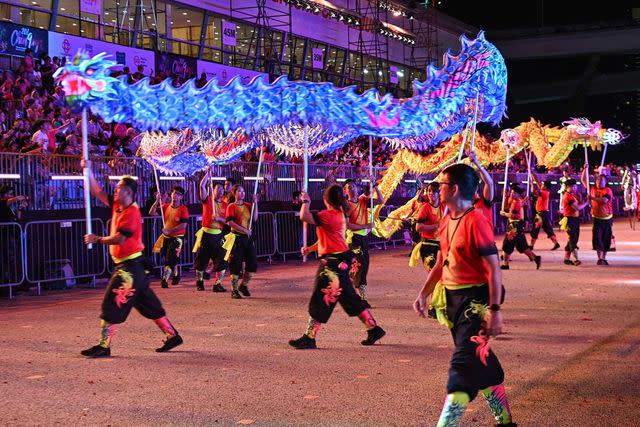
With an approximately 75% Chinese population, Singapore goes all out for Lunar New Year. A variety of treats, from nian gao (sticky rice cakes) to pineapple tarts, can be enjoyed here. Another food that's commonly eaten is yusheng, a traditional raw fish salad that's only had during the holiday.
Red envelopes are handed out with the phrase "Fú" (meaning good luck) engraved on them. It's also custom to pay respect to ancestors by going to a temple and lighting incense.
The Chingay Parade, which occurs each year for Lunar New Year, is an extravagant celebration that includes everything from giant floats to lion dancers. Meanwhile, the largest Chinese New Year festival in Singapore is the River Hongbao, which is hosted at different locations across the country each year.
Lunar New Year in Malaysia
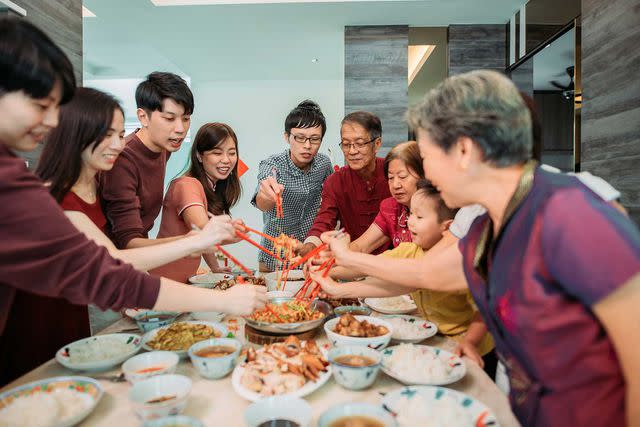
In Malaysia, the Lunar New Year is seen as the welcoming of spring and a chance for families to come together for an annual reunion dinner. The holiday lasts for 15 days, and on the last day, Chap Goh Mei is celebrated. (Depending on your ethnic group, there are some specific days for celebration. For example, Hokkien New Year is observed on the ninth day of Chinese New Year.)
Yee sang is a salad dish that can be found at almost every table, as it represents good luck and prosperity. Nian gao, a Chinese New Year's cake made with rice flour, is also popular during the Lunar New Year. Mandarin oranges symbolize good luck, while red pocket envelopes (known as ang pow) are given to children and unmarried family members. Many Buddhist families invite lion dancers to their homes to bless their altars and ward off bad spirits, too.
Traditional outfits, called cheongsam (also known as qipao), are worn in red. They also say if you're celebrating your zodiac year, you must wear the color gold to attract even more abundance for the year.
Lunar New Year in Taiwan
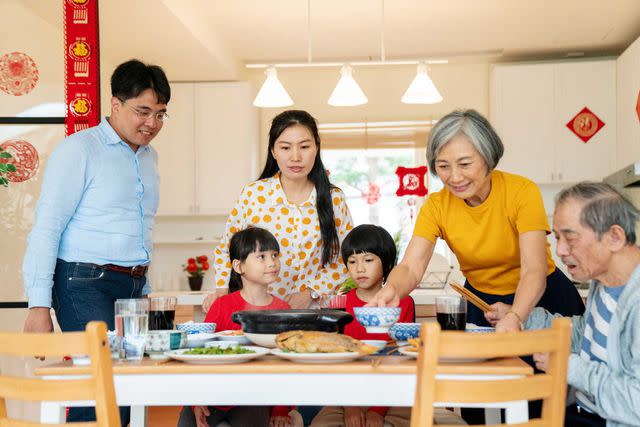
In Taiwan, most people go home to celebrate the new year with their families. It's another country that strongly associates the holiday with food. Nian gao (dumplings) is the most popular dish, closely followed by pineapple. It's considered good luck to not eat all the fish and keep some leftovers from your holiday meals.
Most Taiwanese people spend time with their family and elders in their homes. They also exchange red envelopes during the holiday, and many neighborhoods set off firework displays.
Lunar New Year in the Philippines
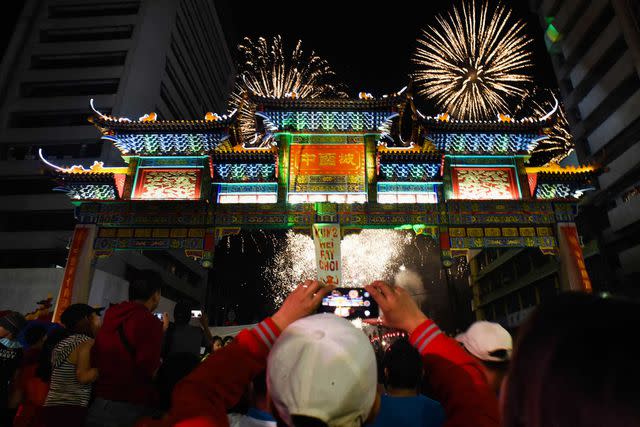
When the clock strikes midnight in the Philippines, you'll see children and adults jumping for joy, as it's said that it will make them grow taller. The most traditional celebration of the Lunar New Year is called Media Noche, where Filipino families come together for a midnight feast to celebrate a year of prosperity ahead. The table is usually full of round-shaped fruits — a tradition that originates from China — as the shape represents good fortune.
The food that's typically eaten during Lunar New Year in the Philippines includes sticky rice dishes, such as biko, bibingka, and nian gao, since it's believed to help bind families together. Pancit (long noodles) is also enjoyed to help bring a healthy, long life and good luck for the year ahead.
One of the most unique superstitions of the Lunar New Year in the Philippines is choosing to wear polka dots, as their round shape represents prosperity, money, and good fortune. Fireworks are also often set off to create loud noises to scare away any bad spirits, while lights are turned on and windows and doors are left open. Another popular superstition is not spending any money on the first day of the year to encourage better finances.
For more Travel & Leisure news, make sure to sign up for our newsletter!
Read the original article on Travel & Leisure.

